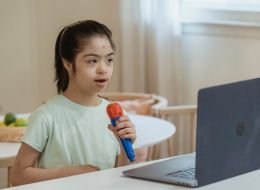Best autism treatment centers in Bangalore.
Autism is characterised by severe and pervasive impairments in several important areas of development: reciprocal social interaction and communication as well as behaviour, and imagination. In order to be diagnosed with autism, the behavioural symptoms in all of the above-named areas must be present by age 3. Even if the parents often notice that something is wrong during infancy, it is very difficult to diagnose autism before the age of eighteen months.
Early identification, assessment and diagnosis are the first step. The next step is to provide accurate information for, and education of, parents and other concerned persons as soon as possible. These, together with promptly applied supportive measures that are both well-planned and individually tailored, are the long-term basis for being able to help the child to develop.
Autism is a behaviourally-defined condition, but is caused by a number of different known and unknown biologically based brain dysfunctions that affect the developing brain’s ability to handle information. Autism is a neurodevelopmental disorder. There is a genetic component in many cases. The different way of processing information, such as perceiving, processing and interpreting information, learning new things and behaving in a well-adapted way, leads to the behavioural deviations that can be observed.
